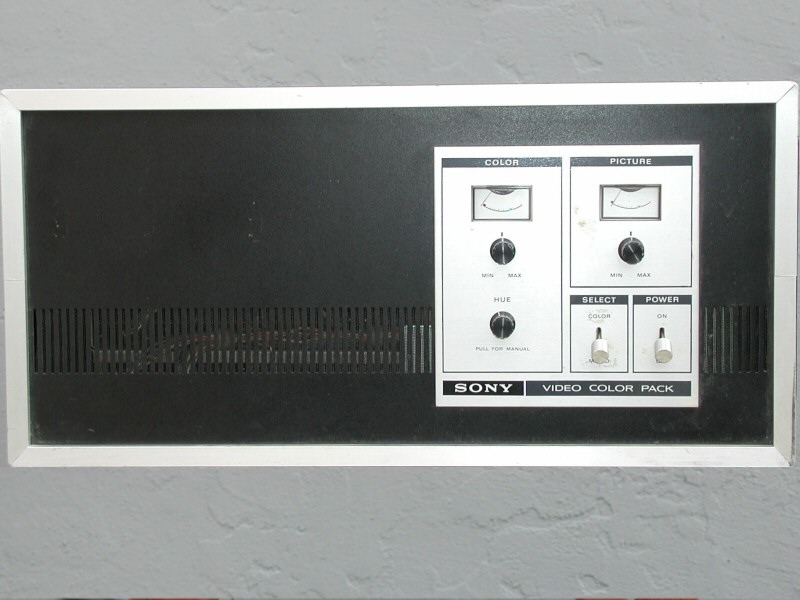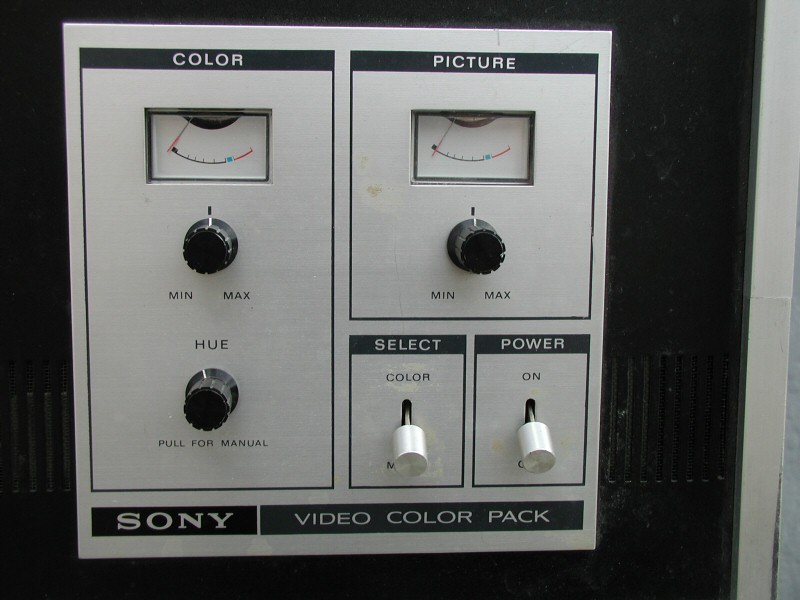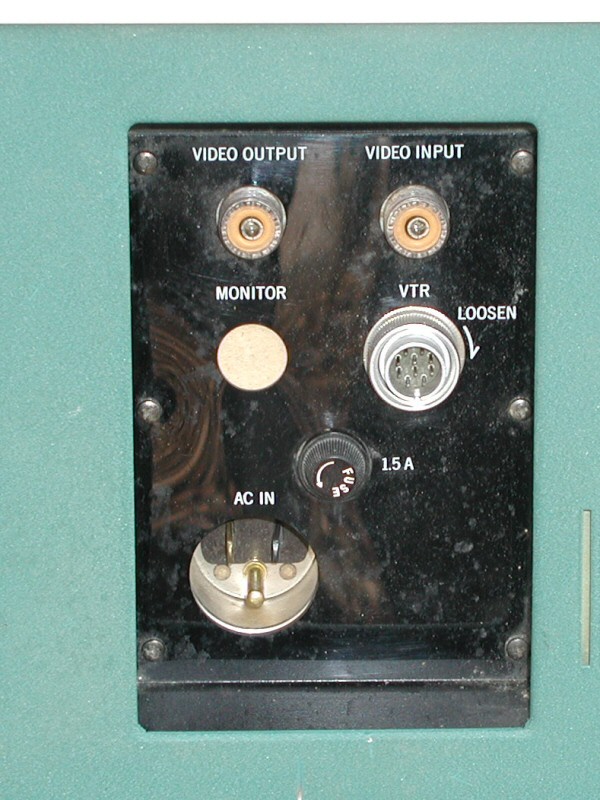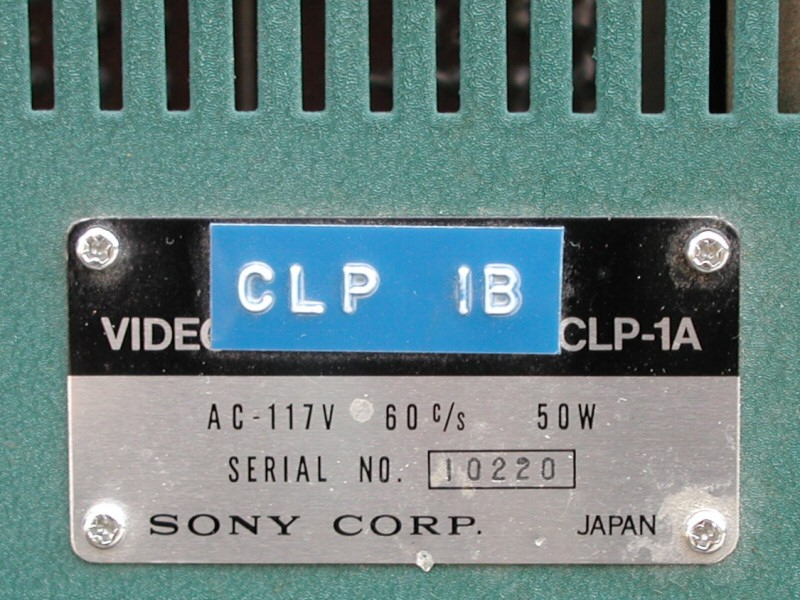In the earliest days of helical scan video tape recorders, black and white was
king. There were no color capable decks before about 1965. Sony introduced the
PV-100, a two inch helical scan video tape recorder in 1960 and the PV-120 in
61 or 62. The difference being that the PV-120 could operate in color, albeit
using an external and optional color converter pack. That was the CLP-1A.
Then Sony introduced the EV-200 in 1964 and the EV-210 right after that, or
possibly together. Both of these VTR's, as well as later models, were one inch
machines. The EV-210, like the PV-120 had optional color capability using the
CLP-1B color pack. As shown here. Note that this unit appears to have been
converted from CLP-1A to a CLP-1B. Anyone have any info about aupgrading these?
The CLP-1B is connected to the videocorder via a standard 10 pin EIAJ camera
cable. All color funtions are controlled on the front of the CLP-1B. Color
composite video input and output are through UHF connectors located on the
CLP-1B. The CLP-1B is self powered on AC.
|
The color adapter operates by
first separating the BW and color components of the video signal. The BW part is
still recorded to tape using the standard FM method. The color is converted to a
lower frequency in the hundreds of kilohertz range and recoded directly to the tape.
The FM part serves an AC bias to the direct recorded, down converted, color signal.
On playback, the BW and color
parts are read back from tape, the color is up converted and added back to the BW
part, restoring a reasonable facsimile of the orignal signal. During the conversion
process, the time base error of the playback horizontal sync is measured, inverted
and fed to a voltage controlled oscillator which provides the up convert frequency
for the color. It is designed to perfectly counteract the time base error effects
on the chroma signal. The BW is as unstable as ever, but the TV monitor can lock to
and decode the color signal.
The CLP-1A used a differnt method.
It converted the input NTSC video to a SECAM-like signal and direct recorded that to
tape. I have no other info about that one.
|







